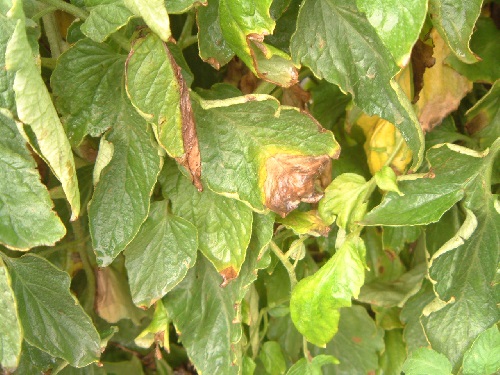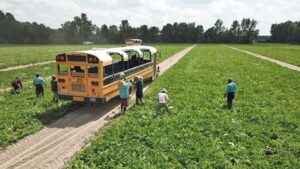Texas Ag Assessing Damages in Wake of Hurricane Beryl
Beryl, the second storm of the 2024 Atlantic hurricane season, will likely be a name retired by the National Weather Service. The storm achieved Category 5 status earlier than any other system on record in the Atlantic. And despite devastating landfalls in the Leeward Islands and Yucatan Peninsula, Beryl still had enough steam to strike Southeast Texas as a strong Category 1 storm.
Hurricane Beryl brought with it severe winds (80+ mph sustained for hours), heavy rain, and significant coastal surge. Plenty of farm acreage was in the path of Beryl. Damage assessments are in the very early stages for growers.
According to Gary Joiner, Director of Communications for the Texas Farm Bureau, there are varying degrees of damage from Hurricane Beryl to local farms and ranches in the landfall areas. Rain totals ranged from 2 inches to more than 10 inches. Some localized areas picked up nearly 15 inches.
“Grain sorghum in the impacted areas that was in the middle of harvest was damaged, but farmers feel a portion of the crop can be salvaged,” Joiner says. “Also impacted were corn fields that were just a few days from harvest and cotton that was anywhere from two weeks to a month away from being defoliated. A lot of the corn was blown. Thankfully, it appears most was not blown over all the way to the ground. Farmers are saying they think harvest equipment will still be able to get through the fields and harvest the corn.”
Joiner adds that cotton crops were hit with high winds as well, but farmers say some fields are still standing. “Most of the cotton bolls had not yet opened, which helped protect the lint. They are seeing a lot of cotton leaves on the ground though. Most of the cotton crop at this point needs photosynthesis, and the leaves are the mechanism to complete the crop. It is too early to predict a level of yield reduction to the cotton.”
Blair Fannin of Texas A&M AgriLife says field assessments of specialty crops are still ongoing.
Just prior to Beryl’s impacts, the Texas Crop Progress and Condition report from USDA indicated: “In the Southern High Plains, watermelons and cantaloupes were being harvested. In the Trans-Pecos, producers were harvesting watermelons, cantaloupes, and onions.”
The latest Texas Crop Progress and Condition report published a week after Beryl’s landfall says: “In the Blacklands, producers were planting okra. In the Trans-Pecos, producers were planting watermelons and cantaloupes. In the Northern High Plains, black-eyed peas were growing. In the Cross Timbers and the Trans-Pecos, pecans were progressing.”
Hurricane Season Just Getting Warmed Up
Beryl is the first major storm of the Atlantic hurricane season, which forecasters are predicting to be extremely active. On a related note, climatologists at Colorado State University (CSU) just updated their long-range forecast to include even greater storm chances ahead. According to CSU Tropical Weather & Climate Research leader Philip Klotzbach, the 2024 Atlantic hurricane season is now predicted to produce 25 named storms (up from its initial forecast of 23); 12 of which will be hurricanes (up from 11); and 6 of those developing into major hurricanes (up from 5). These fresh numbers include the storms already accounted for up to this point: Alberto, Beryl, and Chris.
Klotzbach tweets on X: “One reason for very active Atlantic #hurricane season forecast from CSU is significant potential for #LaNiña development. La Niña typically increases Atlantic hurricane activity via decreases in Caribbean/tropical Atlantic vertical wind shear.”
In a subsequent tweet, he refers to the main reason why CSU’s seasonal forecast (and others) are calling for such an active season — the much-warmer-than-usual waters in the Atlantic.
While there has been slight anomalous cooling since last month, most of the North Atlantic remains much warmer than normal, favoring #hurricane activity. This anomalous warmth is primary reason why CSU's seasonal hurricane forecast for 2024 is calling for such an active season pic.twitter.com/SwwNSb0ngX
— Philip Klotzbach (@philklotzbach) July 9, 2024
This is a developing story. Stay tuned for updates from the field. The Atlantic hurricane season runs until Nov. 30.























